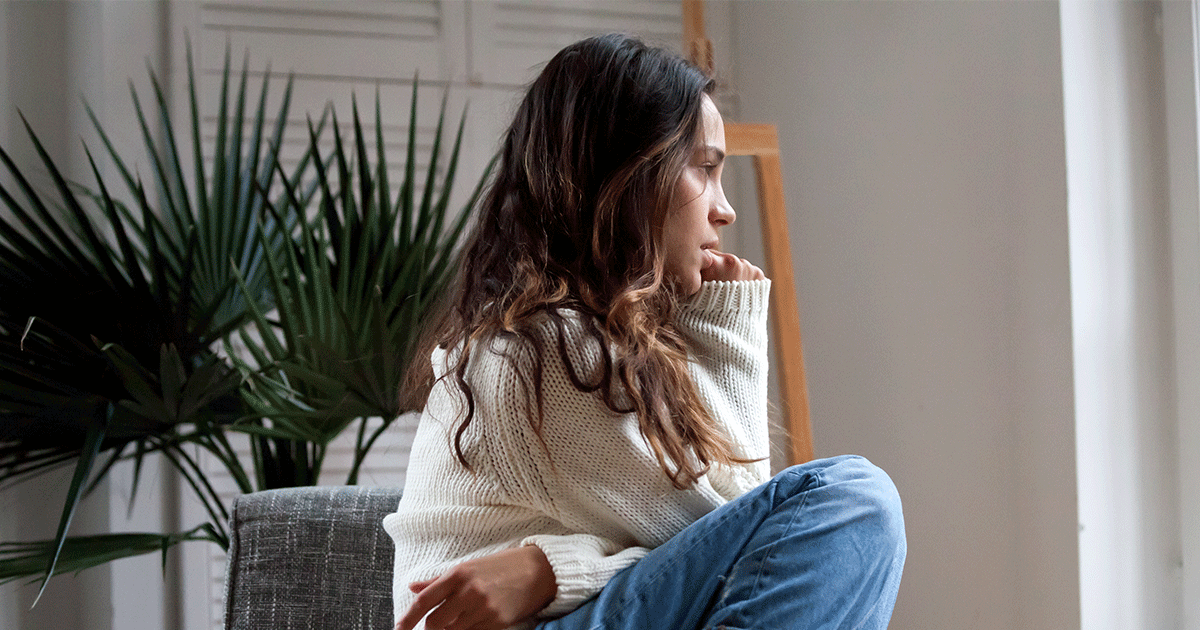A lot of people talk about all the changes that happen to you during pregnancy — all the ways your body is changing, the hormone fluctuations, the things your body is doing to support a developing baby. But we don’t always talk as much about what happens to your body after the baby is born.
Childbirth is followed by a lot of emotions – and not all of them are happiness and joy. Many mothers – 50-75% – experience waves of sadness, fear, anxiety, crying, mood swings, and difficulty making decisions. You might have heard these emotions referred to as “The Baby Blues.” This is really common and will resolve on its own after a couple of weeks — after a little adjustment period. Babies are exhausting and your hormones are adjusting to a new normal, so it makes sense that you’d need a couple of weeks for your body to adjust – physically and emotionally.
You can help yourself during the Baby Blues by giving yourself a little TLC — sleep when the baby sleeps, eat healthy foods, ask for help, seek out support, and exercise. Give yourself some grace while you adjust to a new normal.
But sometimes the sadness and mood swings are more intense and last longer than two weeks. Sometimes The Baby Blues transition into a real depression called postpartum depression. This is a real medical illness.
So what are the signs of postpartum depression?
- Persistent sad, anxious, or empty feeling
- Irritability
- Feelings of guilt, worthlessness, hopelessness, or helplessness
- Loss of interest in anything you used to find fun
- Fatigue or abnormal decrease in energy
- Restlessness or trouble sitting still
- Difficulty concentrating, remembering, or making decisions
- Difficulty sleeping – even when the baby is sleeping
- Oversleeping
- Abnormal appetite
- Aches, pains, digestive problems – that do not get better with treatment or that have no explained cause
- Trouble bonding or forming an emotional attachment with your baby
- Thoughts about death, suicide, or harming your baby
There isn’t just one cause for postpartum depression. Any woman can experience it. But some factors can make it more likely for someone to experience postpartum depression — a history of mental illness, past trauma, previous postpartum depression, additional life stresses, and the loss of a baby, either through stillbirth or placing the baby for adoption.
If you’re experiencing signs and symptoms of postpartum depression, it’s important for you to know you aren’t alone. As many as one in five women experience postpartum depression or postpartum anxiety. This means – you probably know someone who can relate to what you’re going through.
What can you do if you’re having symptoms of postpartum depression?
The good news is that you don’t have to suffer alone. There are treatments available. Call your healthcare provider and ask for help. Most healthcare providers will recommend medicine, therapy/counseling, or a combination of both. The FDA has even approved one medication specifically to treat postpartum depression. There are options to help you.
A small percentage of women experience something even more severe than postpartum depression. Postpartum psychosis is a severe mental illness and needs immediate help. Women experiencing postpartum psychosis may have delusions (thoughts that aren’t true), hallucinations (hearing or seeing or smelling things that aren’t real), mania (feeling very elated and out of touch with reality), paranoia, or confusion. Women who have postpartum psychosis may be at risk of harming themselves or their children. Postpartum psychosis is a medical emergency and needs to be addressed immediately. This is a call-911 situation. Recovery from postpartum psychosis is possible with immediate treatment.
If you think you’re experiencing postpartum depression, ask for help. Talk to a trusted friend or family member and call your healthcare provider. If you don’t know who to call for help, call us. We’ll listen and help you find the resources you need.
Pregnancy and childbirth — growing and delivering a baby — That’s hard work! You’ve done hard work! And it makes sense that your body takes time to adjust physically, mentally, and emotionally. You are strong and amazing! And it’s OK to ask for help when you need help.





